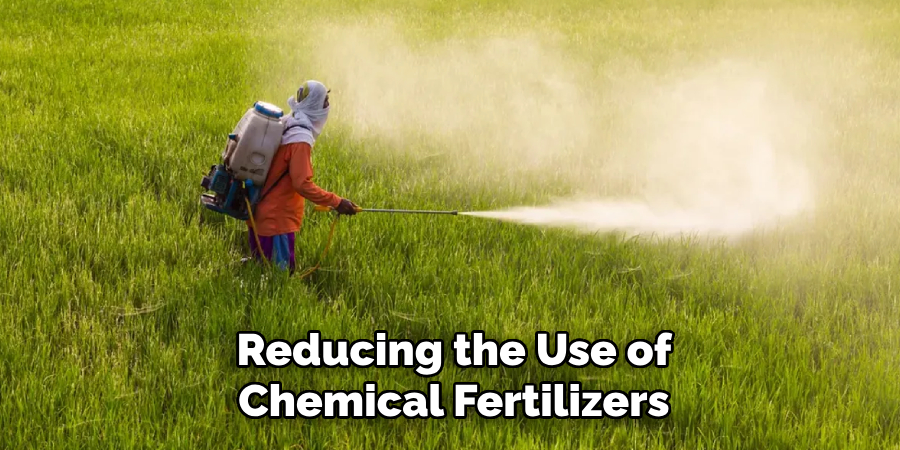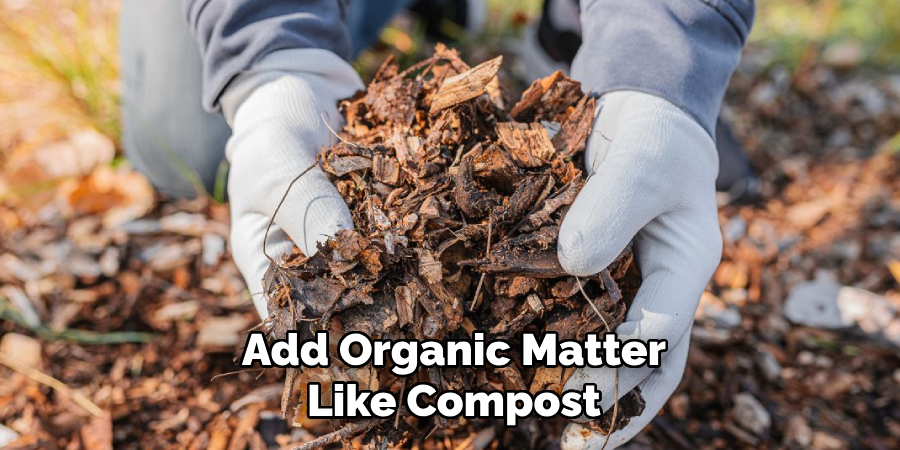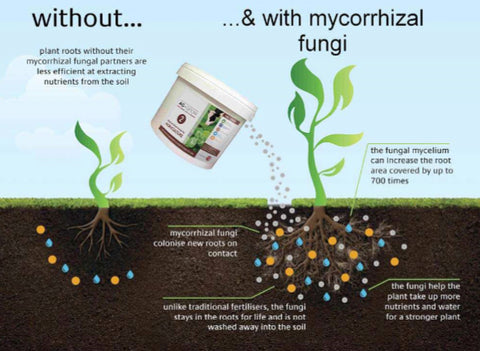To increase mycorrhizal fungi in soil, you can add organic matter and maintain proper soil moisture levels. Mycorrhizal fungi can be enhanced by incorporating compost, mulch, or biofertilizers into the soil, and by avoiding the use of synthetic fertilizers and pesticides.
These fungi form a beneficial symbiotic relationship with plant roots, improving nutrient absorption and overall plant health. By implementing these practices, you can cultivate a healthy and thriving mycorrhizal fungi population in your soil.

Credit: simplifygardening.com
Understanding The Role Of Mycorrhizal Fungi In Soil Ecology
Mycorrhizal fungi play a vital role in soil ecology by enhancing nutrient cycling and promoting plant health. There are two types of mycorrhizae: ectomycorrhizae and arbuscular mycorrhizae, each with its own unique benefits. These fungi establish a symbiotic relationship with plant roots, facilitating the transfer of nutrients such as phosphorus and nitrogen.
They also improve soil structure, water retention, and disease resistance. In addition, mycorrhizal fungi enhance plant growth by increasing access to limited nutrients, enhancing root development, and aiding in stress tolerance. Therefore, understanding the significance of mycorrhizal fungi and their positive effects on plants is essential for optimizing soil health and sustainable agricultural practices.
By promoting the growth and abundance of mycorrhizal fungi, farmers and gardeners can improve soil fertility and plant productivity.
How to Increase Mycorrhizal Fungi in Soil: Step by Step Guide
Assessing Mycorrhizal Fungi Levels In Soil
Testing and assessing the levels of mycorrhizal fungi in soil is crucial for promoting their growth. Factors such as soil ph and organic matter content greatly influence the population density of mycorrhizal fungi. Hence, it is important to test for their presence in the soil.
There are several techniques available for testing mycorrhizal fungal presence in soil. These techniques involve visual inspection, such as observing the presence of mycorrhizal structures like arbuscules or vesicles. Molecular techniques like dna analysis can also be used to determine the presence and quantity of mycorrhizal fungi in soil samples.
Assessing mycorrhizal fungal levels allows gardeners and farmers to understand the health of their soil and make necessary amendments to increase the population density of mycorrhizal fungi. By creating an optimum environment, gardeners can enhance the benefits provided by these beneficial fungi to plants.
Strategies To Increase Mycorrhizal Fungi In Soil
Implementing crop rotation and cover cropping techniques can enhance soil fertility naturally. These practices help break pest cycles and add organic matter to the soil, fostering the growth of mycorrhizal fungi. Another strategy is using mycorrhizal inoculants, which introduce beneficial fungi into the soil.
These products are readily available and can effectively enrich the soil with mycorrhizal fungi. Additionally, choosing plant species that promote mycorrhizal symbiosis is crucial. Some plant families, such as leguminosae and fagaceae, have a natural affinity for mycorrhizal associations. By incorporating these strategies into your soil management practices, you can increase the presence and activity of mycorrhizal fungi, leading to improved plant growth, nutrient uptake, and overall soil health.
Incorporating Mycorrhizal Fungi Into Gardening And Agriculture Practices
Mycorrhizal fungi can be effectively incorporated into gardening and agriculture practices, particularly in container gardening. To establish mycorrhizal symbiosis, there are various methods to consider. In monoculture and polyculture systems, the benefits of mycorrhizal fungi are evident. By maximizing mycorrhizal efficiency through proper fertilization techniques, gardeners and farmers can enhance the overall health and productivity of their plants.
This symbiotic relationship between plants and mycorrhizal fungi can greatly improve nutrient uptake, resistance to diseases, and overall plant growth. Incorporating mycorrhizal fungi into soil is a natural and sustainable approach to enhance ecosystem functioning and promote healthy plant development.
With an understanding of these methods and their benefits, gardeners and farmers can harness the power of mycorrhizal fungi to improve their gardening and agriculture practices.
Promoting Mycorrhizal Fungi In Restoration And Conservation Projects
Promoting mycorrhizal fungi in restoration and conservation projects is crucial for improving soil health. Leveraging mycorrhizae in reforestation and afforestation efforts is an effective strategy. These fungi play a vital role in restoring degraded ecosystems by enhancing nutrient uptake in plants.

Land management practices significantly impact the abundance of mycorrhizal fungi. Sustainable land practices, such as reducing the use of chemical fertilizers and pesticides, can help increase the presence of these beneficial organisms. By ensuring the right conditions for mycorrhizae to thrive, we can enhance the overall productivity and biodiversity of ecosystems.
Restoring degraded soil with mycorrhizal fungi is an eco-friendly solution that supports sustainable conservation practices.
Best Practices For Maintaining A Mycorrhizal-Friendly Soil Environment
Maintaining a mycorrhizal-friendly soil environment involves avoiding excessive use of synthetic fertilizers and fungicides. To support the growth of mycorrhizal fungi, it is important to minimize soil disturbance and preserve soil structure. This can be achieved by practicing conservation tillage methods and using organic matter to improve soil health.
Proper water management is also crucial for the survival of mycorrhizal fungi, ensuring they receive adequate moisture without leading to waterlogging or drought stress. By incorporating these best practices into your gardening or farming routine, you can increase the presence of mycorrhizal fungi in your soil, promoting healthier plant growth and maximizing nutrient uptake.
Harnessing The Power Of Mycorrhizal Fungi: A Sustainable Approach To Soil Health And Plant Growth
Mycorrhizal fungi play a vital role in promoting sustainable agriculture by fostering a mutually beneficial relationship with plants. Through this symbiotic bond, both the fungi and plants benefit. By managing and increasing mycorrhizal fungi in soil, farmers and gardeners can unlock long-term advantages.
The advantages of mycorrhizal symbiosis are manifold, as these fungi enhance nutrient uptake, improve plant resilience against diseases and pests, and contribute to soil structure and fertility. However, despite these benefits, awareness about mycorrhizal fungi among farmers and gardeners is lacking.
Educating them about the importance of mycorrhizal fungi and how to harness their power is crucial for sustainable soil health and optimizing plant growth. By embracing mycorrhizal fungi management techniques, we can pave the way for a more sustainable and productive agricultural future.
Frequently Asked Questions Of How To Increase Mycorrhizal Fungi In Soil
How Does Mycorrhizal Fungi Benefit Plants?
Mycorrhizal fungi form a symbiotic relationship with plants, enhancing nutrient uptake and water absorption. This leads to better plant growth, increased resistance to diseases and pests, and improved soil structure.
How Can I Naturally Increase Mycorrhizal Fungi In Soil?

To naturally increase mycorrhizal fungi in soil, you can add organic matter like compost, use cover crops, avoid excessive tilling, and minimize the use of synthetic fertilizers and pesticides. These practices create a favorable environment for mycorrhizal fungi to thrive.
Can Mycorrhizal Fungi Be Added To Soil?
Yes, mycorrhizal fungi can be added to soil by using inoculants. These contain spores or mycelium of the fungi, which can be mixed in the planting hole or sprinkled on the roots during transplantation. This helps establish a beneficial relationship between the fungi and plant roots.
Conclusion
Boosting the presence of mycorrhizal fungi in soil is vital for enhancing plant growth and overall soil health. By promoting a beneficial symbiotic relationship between plants and these fungi, we can unlock a world of benefits. The increased nutrient uptake and water absorption provided by mycorrhizal fungi can lead to stronger, more resilient plants.
Additionally, these fungi help improve soil structure, increase organic matter, and enhance the overall sustainability of agricultural practices. To increase mycorrhizal fungi in soil, it is crucial to choose plant species that are mycorrhizal-friendly, maintain optimal soil conditions including ph and moisture levels, and minimize the use of chemical fertilizers and pesticides that can harm these beneficial fungi.
Regularly incorporating organic matter, such as compost, into the soil can also provide a favorable environment for mycorrhizal fungi to thrive. Taking these steps to support mycorrhizal fungi will not only benefit your plants and soil but also contribute to a more sustainable and environmentally friendly approach to agriculture.
So, get started and embrace the power of mycorrhizal fungi to unlock the true potential of your soil and plants.

